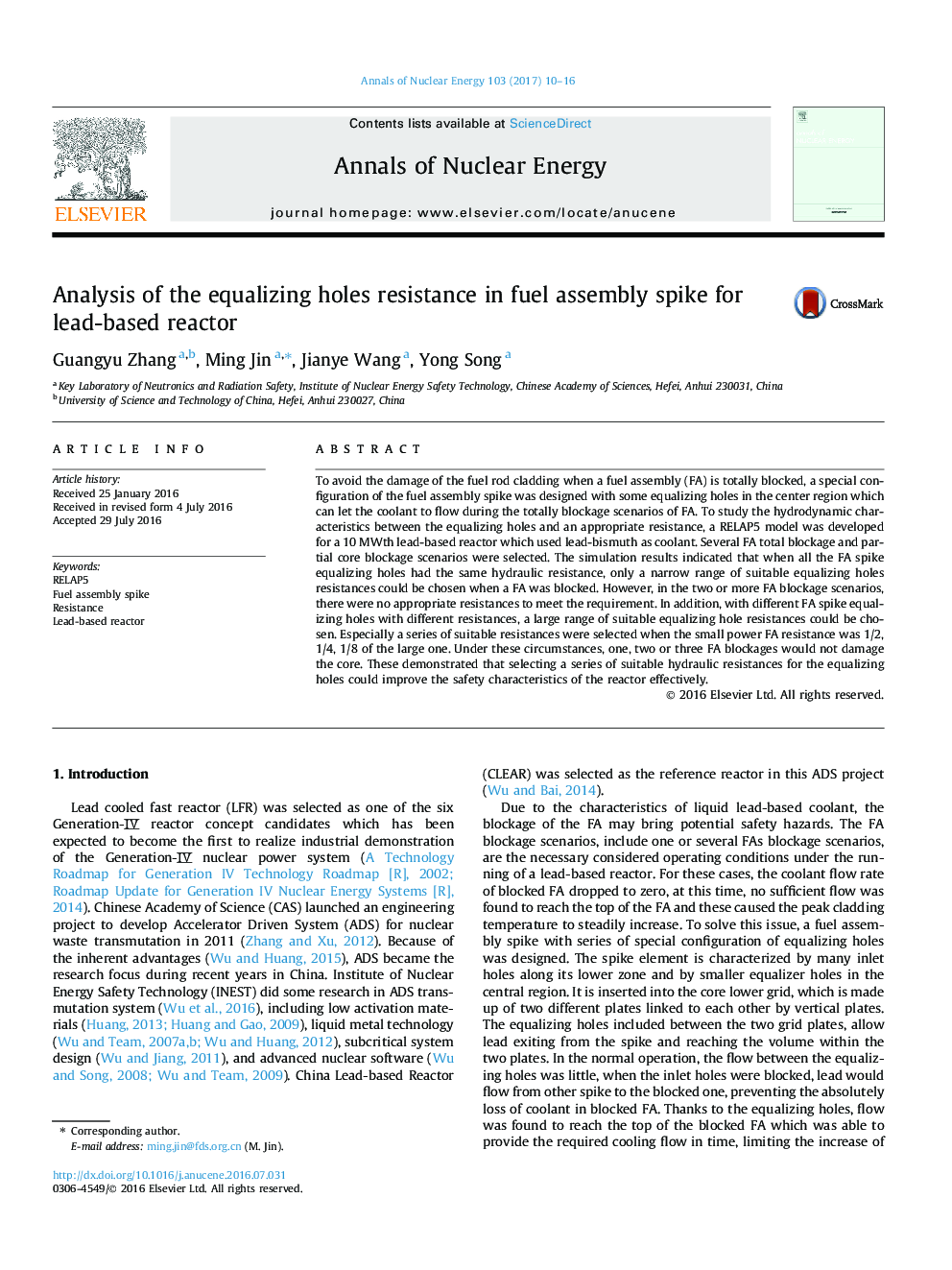| Article ID | Journal | Published Year | Pages | File Type |
|---|---|---|---|---|
| 5475200 | Annals of Nuclear Energy | 2017 | 7 Pages |
Abstract
To avoid the damage of the fuel rod cladding when a fuel assembly (FA) is totally blocked, a special configuration of the fuel assembly spike was designed with some equalizing holes in the center region which can let the coolant to flow during the totally blockage scenarios of FA. To study the hydrodynamic characteristics between the equalizing holes and an appropriate resistance, a RELAP5 model was developed for a 10Â MWth lead-based reactor which used lead-bismuth as coolant. Several FA total blockage and partial core blockage scenarios were selected. The simulation results indicated that when all the FA spike equalizing holes had the same hydraulic resistance, only a narrow range of suitable equalizing holes resistances could be chosen when a FA was blocked. However, in the two or more FA blockage scenarios, there were no appropriate resistances to meet the requirement. In addition, with different FA spike equalizing holes with different resistances, a large range of suitable equalizing hole resistances could be chosen. Especially a series of suitable resistances were selected when the small power FA resistance was 1/2, 1/4, 1/8 of the large one. Under these circumstances, one, two or three FA blockages would not damage the core. These demonstrated that selecting a series of suitable hydraulic resistances for the equalizing holes could improve the safety characteristics of the reactor effectively.
Related Topics
Physical Sciences and Engineering
Energy
Energy Engineering and Power Technology
Authors
Guangyu Zhang, Ming Jin, Jianye Wang, Yong Song,
